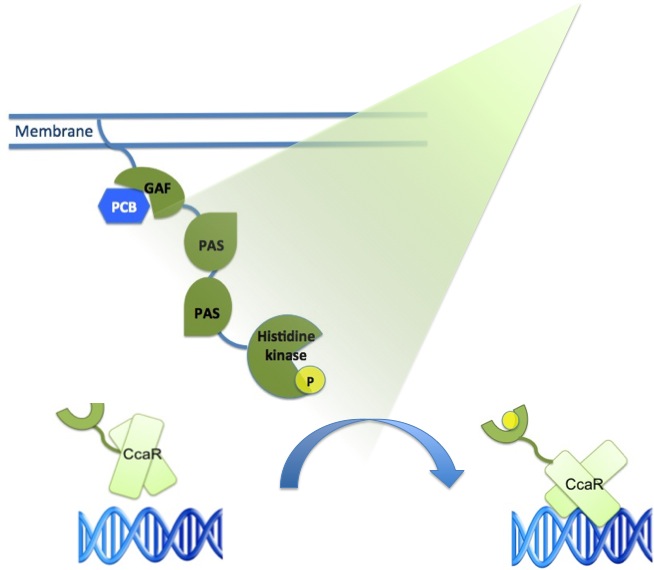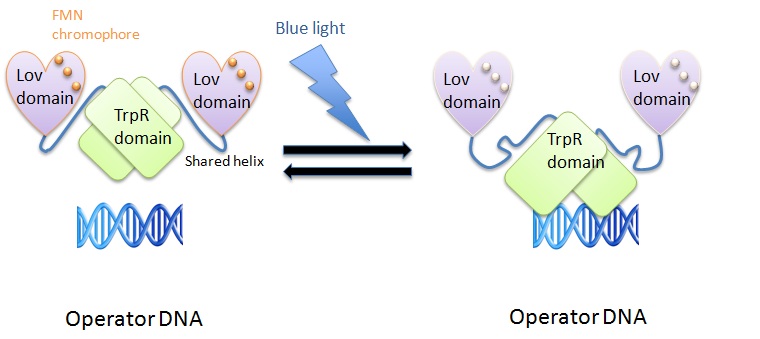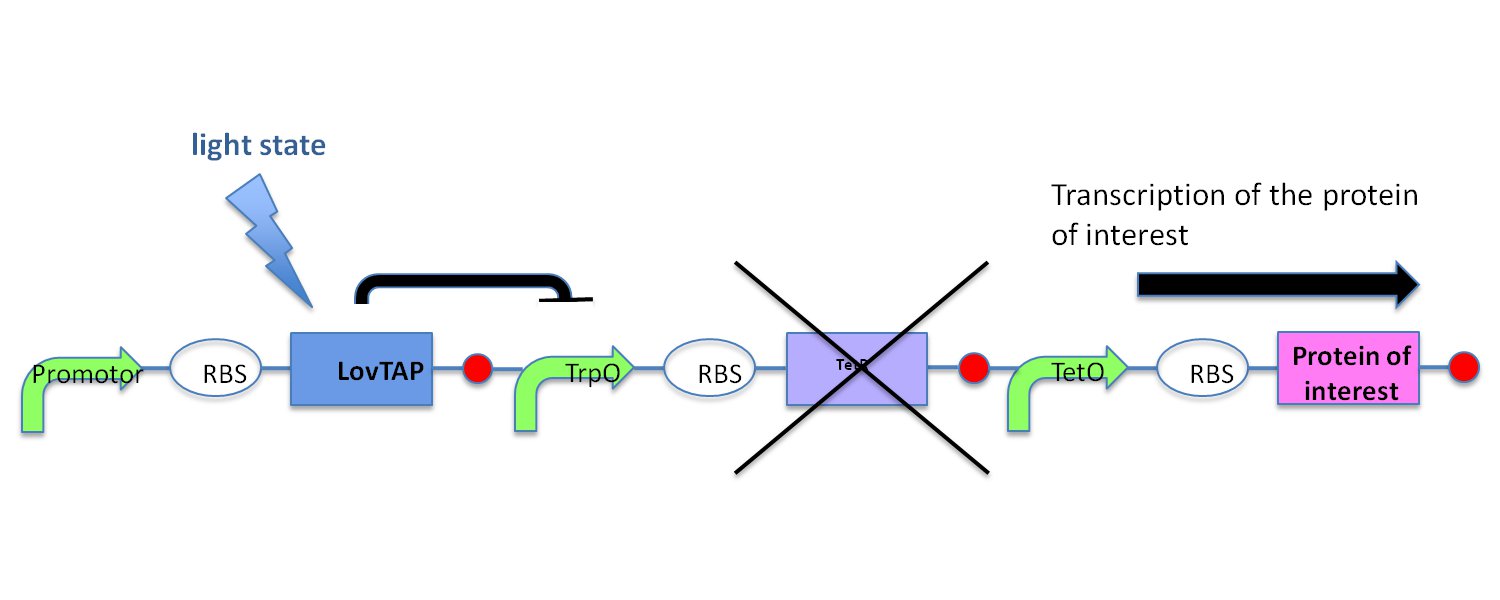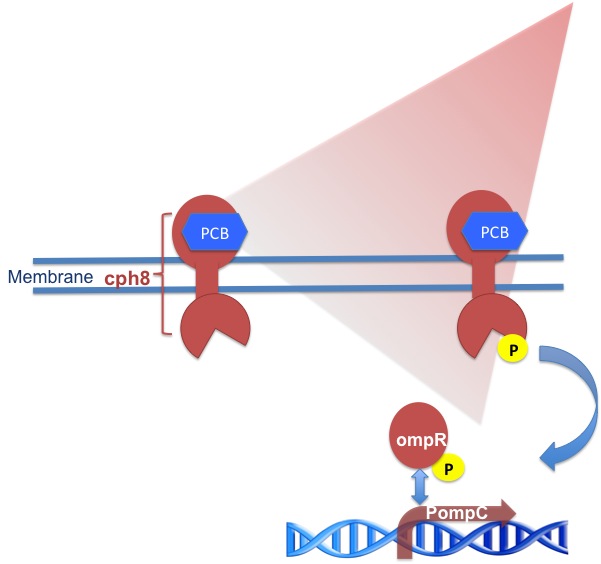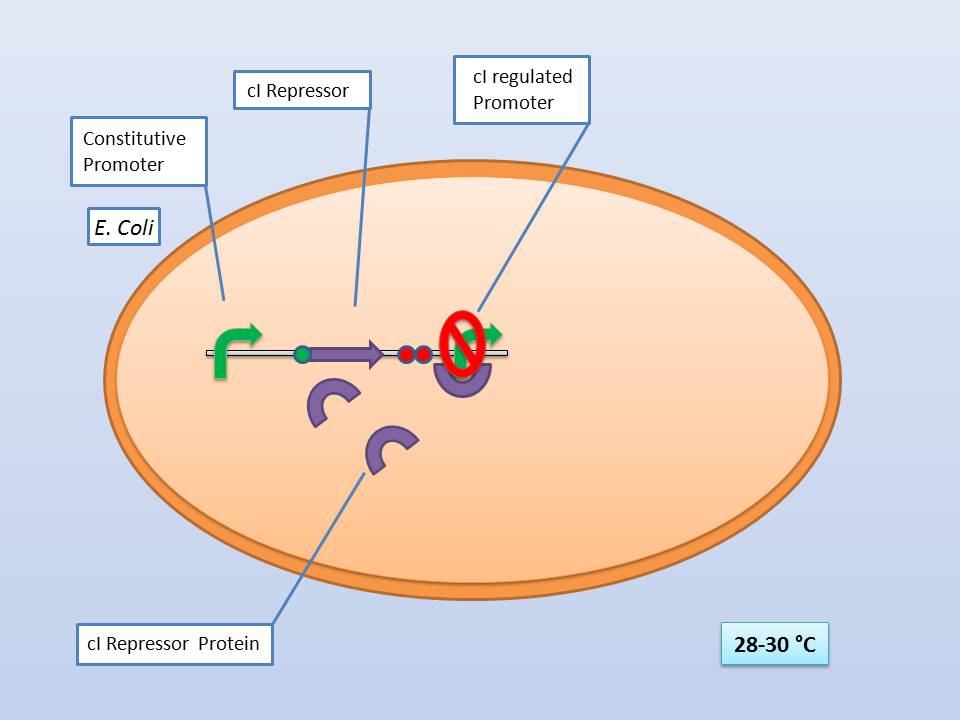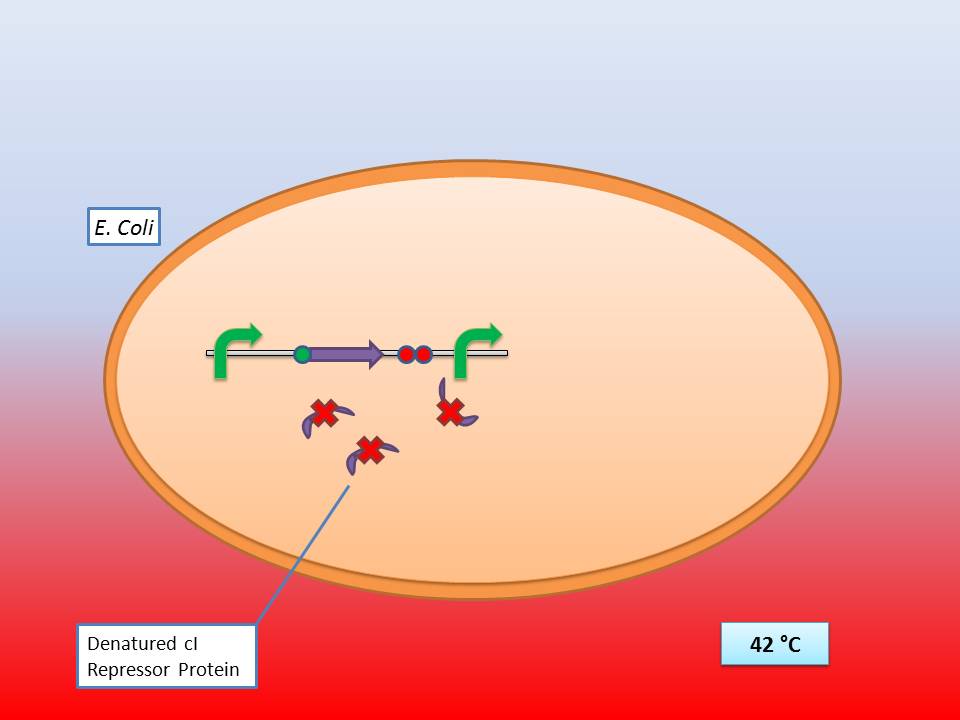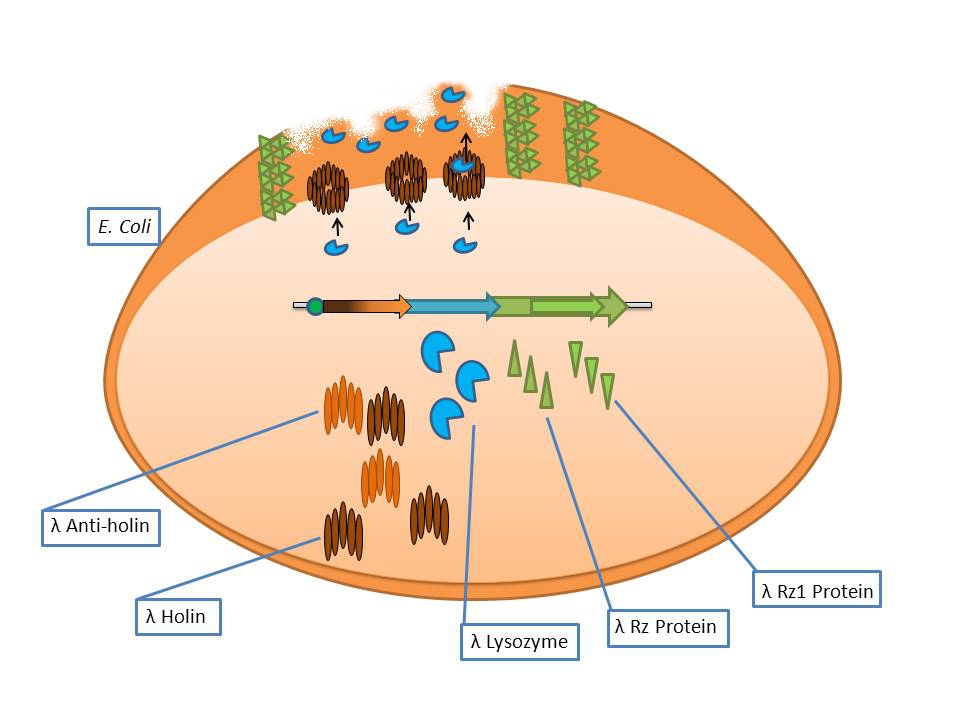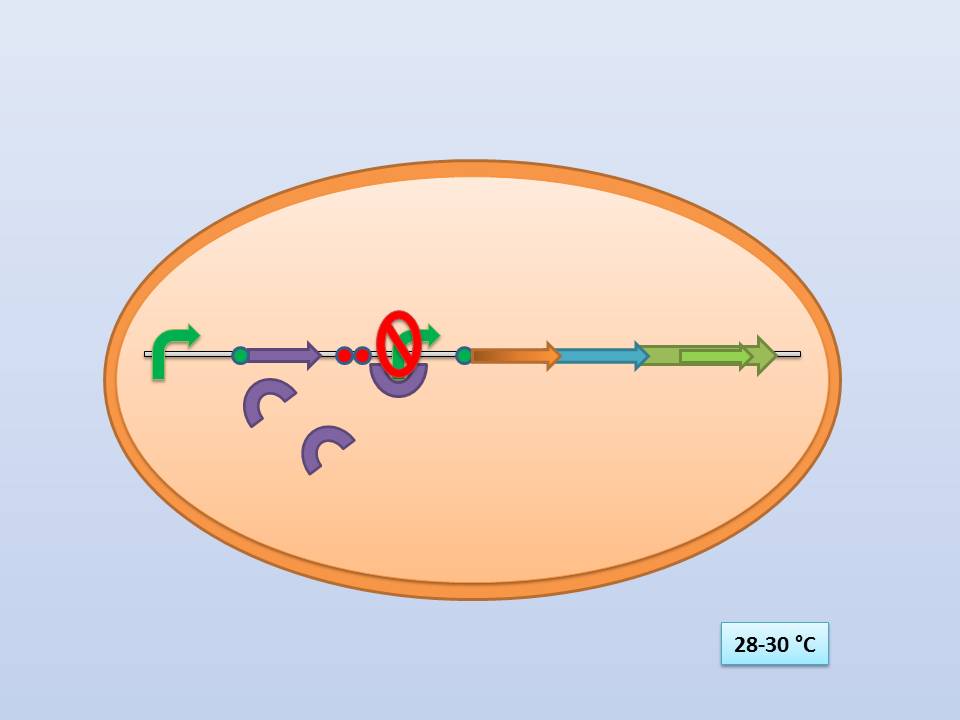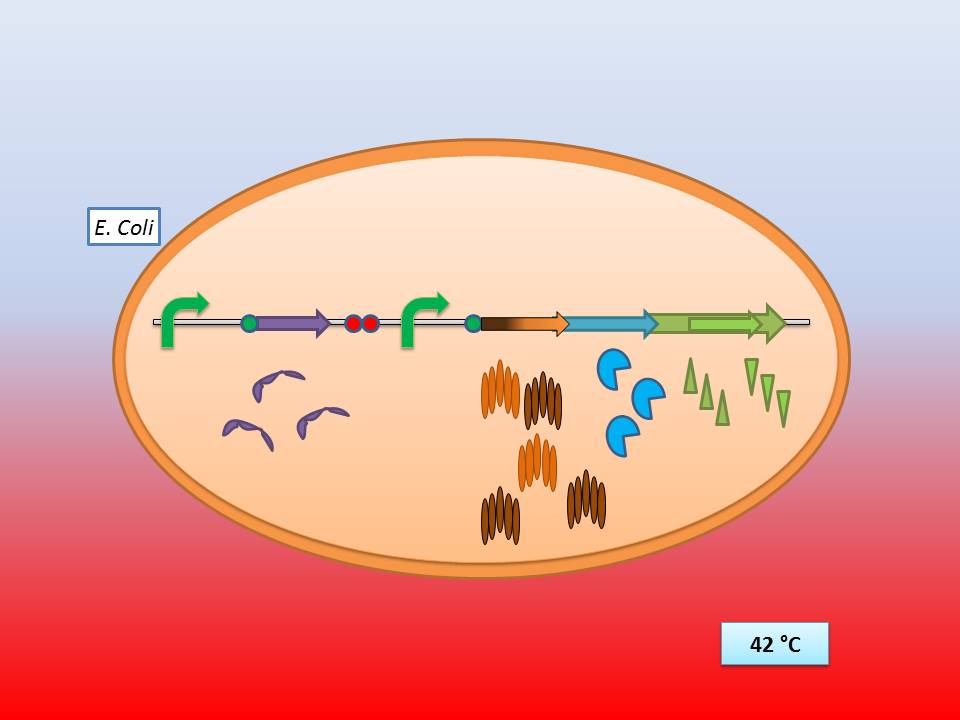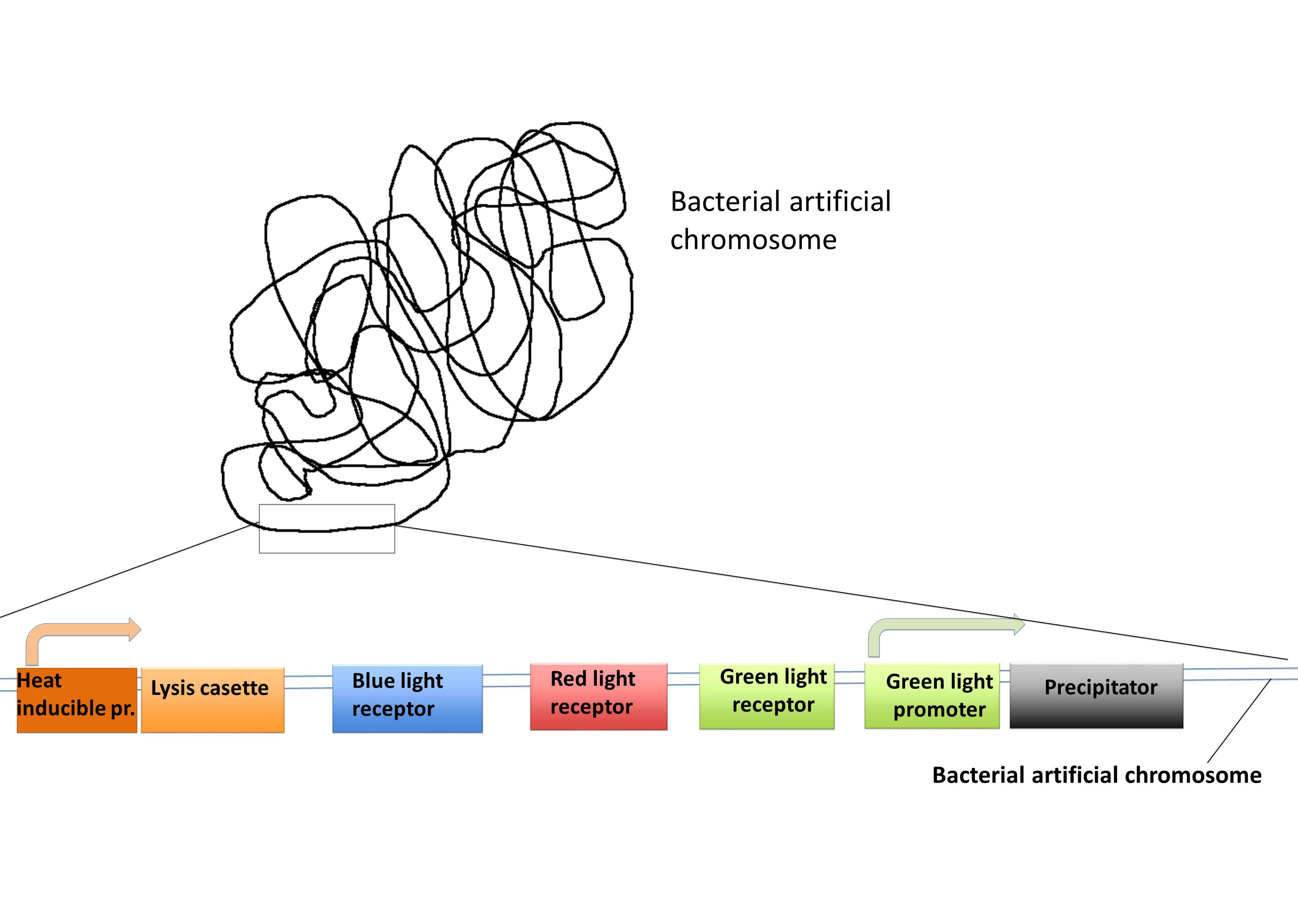Team:Freiburg/Description
From 2011.igem.org
(Difference between revisions)
(→The temperature sensitive promoter (BBa_K608351)) |
Juliimapril (Talk | contribs) (→Plastic binding domain) |
||
| (25 intermediate revisions not shown) | |||
| Line 2: | Line 2: | ||
==<span style="color:grey;">Precipitator</span>== | ==<span style="color:grey;">Precipitator</span>== | ||
| - | + | ||
| - | + | ||
| - | + | ||
| - | + | ||
===The Concept=== | ===The Concept=== | ||
| Line 47: | Line 44: | ||
<span style="color:green;">'''artifical LRR domain fragment'''<br></span>''' | <span style="color:green;">'''artifical LRR domain fragment'''<br></span>''' | ||
|} | |} | ||
| + | |||
| + | {| style="color:black; background-color:lightgrey;" cellpadding="10%" cellpadding="15%" cellspacing="0" border="1" Width="20%" Align="right" | ||
| + | |[[Image:HURRRRGH.png|200px]] | ||
| + | Precipitator binding a polystyrene surface with the plastic binding domain and a His-tagged Protein via Nickel ions | ||
| + | |} | ||
This protein can be used to complex Nickel or Cobalt. Histidines are positioned in such a way, that they can coordinate the ions | This protein can be used to complex Nickel or Cobalt. Histidines are positioned in such a way, that they can coordinate the ions | ||
| Line 58: | Line 60: | ||
==Plastic binding domain== | ==Plastic binding domain== | ||
| - | + | One of the issues of our project „lab in a cell“ was to use endogenous proteins produced by the cell itself for specific purification and hereby to replace expensive columns. The „precipitator“ designed by our team contains a protein binding domain which complexes nickel and thus enables the binding of His-tagged proteins. After cell lysis the “precipitator” is freely dissolved in the cell lysate. To be able to isolate the “precipitator”-His-tagged-protein-complex from the other cell components it has to be immobilized by another protein domain. The part we designed for this function is the so-called plastic binding domain. | |
During routine phage display of random peptide libraries, phages were found that bound directly to the plastic surface of the used plastic micro titer plates. The number of plastic binding phages obtained during the phage display experiments depended on the saturation of the plastic micro titer plates with target protein for the antibody-binding phages and could be reduced by the use of blocking proteins as BSA or non-fat milk. Plastic binding phages were resistant to washing steps with PBS alone as well as to PBS in combination with BSA or non-fat dry milk. It was shown that plastic binding phages were even more difficult to recover by acid elution than the “normal” antibody binding phages (Adey et al., 1995). | During routine phage display of random peptide libraries, phages were found that bound directly to the plastic surface of the used plastic micro titer plates. The number of plastic binding phages obtained during the phage display experiments depended on the saturation of the plastic micro titer plates with target protein for the antibody-binding phages and could be reduced by the use of blocking proteins as BSA or non-fat milk. Plastic binding phages were resistant to washing steps with PBS alone as well as to PBS in combination with BSA or non-fat dry milk. It was shown that plastic binding phages were even more difficult to recover by acid elution than the “normal” antibody binding phages (Adey et al., 1995). | ||
| Line 75: | Line 77: | ||
We decided to use light-controlled gene expression, because light is everywhere and always available.<br/> | We decided to use light-controlled gene expression, because light is everywhere and always available.<br/> | ||
The green light receptor is a light-sensing system from the cyanobactrium ''Synechocystis sp.'' PCC6803.<br/> It consists of three parts interacting with each other in order to start regulated gene expression.<br/> These parts are the following: | The green light receptor is a light-sensing system from the cyanobactrium ''Synechocystis sp.'' PCC6803.<br/> It consists of three parts interacting with each other in order to start regulated gene expression.<br/> These parts are the following: | ||
| - | The main receptor is CcaS(1), a cyanobacteriochrome. | + | The main receptor is CcaS(1), a cyanobacteriochrome, which shows increased autophosphorylation after exposure to green light. The protein CcaS is made up of a N-terminal transmembrane helix, a cyanobactreria specific GAF domain, two PAS domains and a C-terminal histidine kinase.(Yuu Hirose et al.) |
To be fully functional CcaS has to bind the chromophore Phycocyanobilin (PCB) with its GAF-domain. | To be fully functional CcaS has to bind the chromophore Phycocyanobilin (PCB) with its GAF-domain. | ||
The GAF domain in this system has the ligation motif Cys-Leu, instead of the usual plant GAF-domain with Cys-His. | The GAF domain in this system has the ligation motif Cys-Leu, instead of the usual plant GAF-domain with Cys-His. | ||
| + | |||
{| style="color:black; background-color:lightgrey;" cellpadding="10%" cellpadding="15%" cellspacing="0" border="1" align="right" | {| style="color:black; background-color:lightgrey;" cellpadding="10%" cellpadding="15%" cellspacing="0" border="1" align="right" | ||
|[[File:Green light system.jpg|350px]] | |[[File:Green light system.jpg|350px]] | ||
| Line 83: | Line 86: | ||
|} | |} | ||
| - | Its response regulator is CcaR (2) | + | Its response regulator is CcaR (2)which belongs to the family of OmpR regulators. CcaR consists of an N-terminal receiver domain that can be phosphorylated by CcaS and a C-terminal DNA-binding domain that binds directly to the promoter region of cpcG2 (3). CpcG2 is an atypical phycobilisome which is playing a role in the energy transfer to photosystem I. (Yuu Hirose et al.) |
| - | After light of | + | After light of the wavelength of 532 nm is exposed to the CcaS receptor, it changes its conformation. It undergoes autophosphorylation and the phosphate is transfered to the response regulator CcaR. Once phosphorylated, CcaR can bind to the specific promoter region of cpcG and activate gene expression. |
| + | As the green light sensing system from the cyanobacteria ''Synechocystis sp.'' PCC6803 was proven by J. J. Tabor to work also in ''E. coli'', our plan is to integrate the genes for CcaS and CcaR into ''E. coli'' genome with a BAC (bacterial artificial chromosome). The researchers gene of interest just needs to be inserted behind the cpcG2 promoter region and transferred into "our" ''E .coli'' strain to become green light inducible. | ||
| + | <br/> | ||
| - | + | ||
| + | |||
| + | {| style="color:black; background-color:lightgrey;" cellpadding="10%" cellpadding="15%" cellspacing="0" border="1" align="left" | ||
| + | |[[File:Freiburg2011_greenlight_DNA.jpg|500px]] | ||
| + | Green light system | ||
| + | |} | ||
| + | |||
<br/> | <br/> | ||
| + | <br/> | ||
| + | <br/> | ||
| + | <br/> | ||
| + | <br/> | ||
| + | <br/> | ||
| + | |||
| + | |||
| + | |||
| + | |||
| + | |||
---- | ---- | ||
| Line 97: | Line 118: | ||
Yuu Hirose et al ( 2008 )"Cyanobacteriochrome CcaS is the green light receptor that induces the expression of phycobilisome linker protein." | Yuu Hirose et al ( 2008 )"Cyanobacteriochrome CcaS is the green light receptor that induces the expression of phycobilisome linker protein." | ||
Proc Natl Acad Sci U S A. 105: 9528–9533. | Proc Natl Acad Sci U S A. 105: 9528–9533. | ||
| - | |||
Tabor, J. J., Levskaya, A., & Voigt, C. A. (2011). Multichromatic control of gene expression in Escherichia coli. Journal of Molecular Biology, 405(2), 315-324. Elsevier Ltd. Retrieved from http://www.ncbi.nlm.nih.gov/pubmed/21035461 | Tabor, J. J., Levskaya, A., & Voigt, C. A. (2011). Multichromatic control of gene expression in Escherichia coli. Journal of Molecular Biology, 405(2), 315-324. Elsevier Ltd. Retrieved from http://www.ncbi.nlm.nih.gov/pubmed/21035461 | ||
| Line 143: | Line 163: | ||
|} | |} | ||
It consists of a transmembrane part called cph8 , its response regulator OmpR and a co-responding promoter region PompC. Like the green light receptor it needs a chromophore like Phycocyanobilin (PCB) to be fully functional.<br/> | It consists of a transmembrane part called cph8 , its response regulator OmpR and a co-responding promoter region PompC. Like the green light receptor it needs a chromophore like Phycocyanobilin (PCB) to be fully functional.<br/> | ||
| - | |||
| - | |||
| - | |||
| - | |||
| - | |||
| + | More detailed: | ||
| + | Cph8 is a fusion protein of the phytochrome cph1 from Synechocystis sp. PCC6803 and the ''E. coli'' histidine kinase EnvZ. When cph8 is phosphorylated it passes a phosphoryl group to OmpR which binds to and activates transcription of promoter region'' PompC'' . (Tabor, J.) . OmpR is the response regulator for osmoregulation and as it is part of an important regulatory pathway in ''E. coli'', you have to use an ''E. coli''-strain deficient of EnvZ to make your system light dependent. In the paper we are refering to cph8 is expressed from the promoter P(LTetO-1)in a phosphorylated ground state. Light of 650 nm wavelenght unphosphorylates cph8 and light of 705 nm wavelenght leads to the phosphorylated state again. So the red light receptor produces a positive output in darkness. | ||
| + | In order to have a positive output there has to be a genetic inverter like a NOT-gate. | ||
| + | The question remains if cph8 would still be expressed with a different promoter in the phosphorylated ground state. | ||
| + | To establish a red light receptor you need a part design like the one of [http://partsregistry.org/Part:BBa_M30109 BBa_M30109] , but like other iGEM teams we had difficulties with this part and decided to assemble it ourselves. | ||
| Line 157: | Line 177: | ||
References:<br/> | References:<br/> | ||
| - | Tabor, J. J., Levskaya, A., & Voigt, C. A. ( | + | Tabor, J.J., Levskaya, A., & Voigt, C. A. (2010). Multichromatic control of gene expression in Escherichia coli. Journal of Molecular Biology, 405(2), 315-324. |
<br> | <br> | ||
| Line 184: | Line 204: | ||
|- | |- | ||
| style="width: 50%;background-color:lightgrey;" | | | style="width: 50%;background-color:lightgrey;" | | ||
| - | ; | + | ; [[File:Freiburg11 Presentation3.jpg|500px]] |
| - | [[File:Freiburg11 Presentation3.jpg|500px]] | + | |
The temperature sensitive promoter functioning at 42°C | The temperature sensitive promoter functioning at 42°C | ||
|} | |} | ||
| Line 235: | Line 254: | ||
---- | ---- | ||
| - | References: | + | '''References:''' |
| - | Nils B. Adey et al. 1995 | + | Nils B. Adey et al. 1995 “Characterization of phage that bind plastic from phage-displayed random peptide libraries” |
| - | “Characterization of phage that bind plastic from phage-displayed random peptide libraries” | + | |
Gene 156 (1995) 27-31 <br/> | Gene 156 (1995) 27-31 <br/> | ||
| - | Alfredo Menendez & Jamie K. Scott 2005 | + | Alfredo Menendez & Jamie K. Scott 2005 “The nature of target-unrelated peptides recovered in the screening of phage-displayed random peptide libraries with antibodies” |
| - | “The nature of target-unrelated peptides recovered in the screening of phage-displayed random peptide libraries with antibodies” | + | |
Anal. Biochem. 336 (2005) 145-157 <br/> | Anal. Biochem. 336 (2005) 145-157 <br/> | ||
| - | L. A. Cantarero et al. 1980 | + | L. A. Cantarero et al. 1980 |
| - | “The absorptive characteristics of proteins for polystyrene and their significance in solid phase immunoassays” | + | “The absorptive characteristics of proteins for polystyrene and their significance in solid phase immunoassays” |
Anal. Biochem. 105 (1980) 375-382 <br/> | Anal. Biochem. 105 (1980) 375-382 <br/> | ||
| - | Ry Young et al | + | Ry Young et al. 2000 |
| - | “Phages will out: strategies of host cell lysis” | + | “Phages will out: strategies of host cell lysis” |
Trends in Microbiology Vol 8, Issue 3 (2000) 120-128<br/> | Trends in Microbiology Vol 8, Issue 3 (2000) 120-128<br/> | ||
| - | Joel Berry et al | + | Joel Berry et al. 2008 |
| - | “The final step in the phage infection cycle: the Rz and Rz1 lysis proteins link the inner and outer membranes” | + | “The final step in the phage infection cycle: the Rz and Rz1 lysis proteins link the inner and outer membranes” |
Molecular Microbiology 70 (2008) 341–351<br/> | Molecular Microbiology 70 (2008) 341–351<br/> | ||
==Bacterial artificial chromosome== | ==Bacterial artificial chromosome== | ||
<br/> | <br/> | ||
| - | Bacterial artificial chromosome a vector based on the single copy plasmid F-factor from ''Escherichia coli'', which can host inserts from bacteria or other sources between 150 and 350 kilo base pairs (kbp) but up to 700 kbp, and hold them for more then 100 generations. The BAC vector has some common gene components that are: the oriS and repE which are responsible for the not bidirectional replication. The parA and parB genes control the copy number of the BAC. In addition there is a selection marker commonly an antibiotic resistance and finally the cloning segment with the restriction sites. This cloning segment will be flanked by a T7 and SP6 promoter. Usually BACs are used to build up libraries or genetically screening, through its stability. | + | Bacterial artificial chromosome (BAC) is a vector based on the single copy plasmid F-factor from ''Escherichia coli'', which can host inserts from bacteria or other sources between 150 and 350 kilo base pairs (kbp) but up to 700 kbp, and hold them for more then 100 generations. The BAC vector has some common gene components that are: the oriS and repE which are responsible for the not bidirectional replication. The parA and parB genes control the copy number of the BAC. In addition there is a selection marker commonly an antibiotic resistance and finally the cloning segment with the restriction sites. This cloning segment will be flanked by a T7 and SP6 promoter. Usually BACs are used to build up libraries or genetically screening, through its stability. |
<br/> | <br/> | ||
| - | We want to put most of our parts in a BAC so | + | We want to put most of our parts in a BAC so it can be used as a “Lab in a cell” system.<br/> This is very easy to handle and is a persistent transformation. Combined with our BAC vector we also have a transient plasmid with promoters for the expression of the His-tagged protein you want to purify. This protein can be cloned after these promoters and can be expressed with the influence of light (for example blue light). With this single cloning step, you can express your protein of interest. With the BAC vector all the other proteins are expressed dependent on light exposure and heat. |
| - | + | ||
| - | + | ||
| + | [[File:Freiburg2011_BAC.jpg|500px]] | ||
---- | ---- | ||
Latest revision as of 03:51, 22 September 2011
 "
"
 Contact
Contact 



